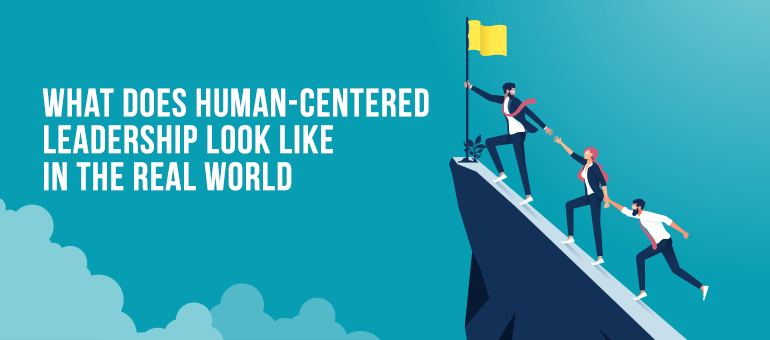Human-centered leadership is defined simply as leadership that prioritizes people. However, what does this look like in practice? The way we communicate, how we think, and how much we trust others are all influenced by how human-centered we are. It alters the way we approach situations and consider how we might move forward in our lives. To combat employee burnout and the pressures of hybrid work, we must adjust our goals and make employee well-being a strategic imperative.
When it comes to leadership, the concept of “human-centered leadership” may appear redundant. In “conventional” leadership, the focus is on meeting goals, delivering on promises, keeping everyone on track, and ensuring everyone is on track. Human-centered leadership, on the other hand, prioritizes people and achieves success by taking everyone together. Ultimately, this leadership style recognizes that encouraging employee well-being may improve business outcomes.
Human-Centered Leadership: Three Crucial Elements
Leaders who put their employees’ needs as human beings and nurturing work environments are fostered. This is a list of the three most important principles of the new leadership style.
Empathy
Human-centered leaders take into account their prejudice and privilege, as well as the life situations of their employees. As a result, employees are more satisfied with the company’s services and products. These business executives know how important it is for their workers to get enough sleep and be treated with respect, even when life gets in the way of their job.
Vulnerability
Leaders who demonstrate vulnerability foster an atmosphere of psychological security and mutual trust. Connecting with coworkers and allowing them to bring their true selves to the official result from workplace vulnerability. Admitting mistakes, asking for feedback, and reflecting on one’s behavior are good examples of leadership vulnerability. Instead of focusing on production, managers prioritize the well-being of the organization’s employees and the development of interpersonal relationships.
Humility
Humility is a virtue among human-centered leaders who constantly believe they have more to learn. They approach their job with a growth mindset rather than a fixed mindset of being correct or brilliant. Instead of encouraging competitiveness and routine, they promote cooperation and openness among their staff and themselves through mentorship, coaching, and learning. Companies take the time to recognize their employees’ achievements and are delighted when they can assist their success.
It will be much simpler for leaders who put these principles into practice to maintain a human-centered culture. To top it all off, they’ll serve as role models for other leaders and managers in the business who want to take a more human-centered approach to leadership.
What’s Next in Human-Centered Leadership?
Human-centered leadership is driving several occupational reforms. Organizational leaders across a wide range of industries are beginning to recognize that supporting their employees and cultivating a positive work environment isn’t just nice to have; it’s essential to the success of their businesses.
Conclusion
COVID-19 has revolutionized every part of business, generating numerous chances for innovation as a society, businesses, and individuals determine the future. Human-centric leaders develop trust with people, embrace diverse objectives, encourage success, and build a motivated team.



